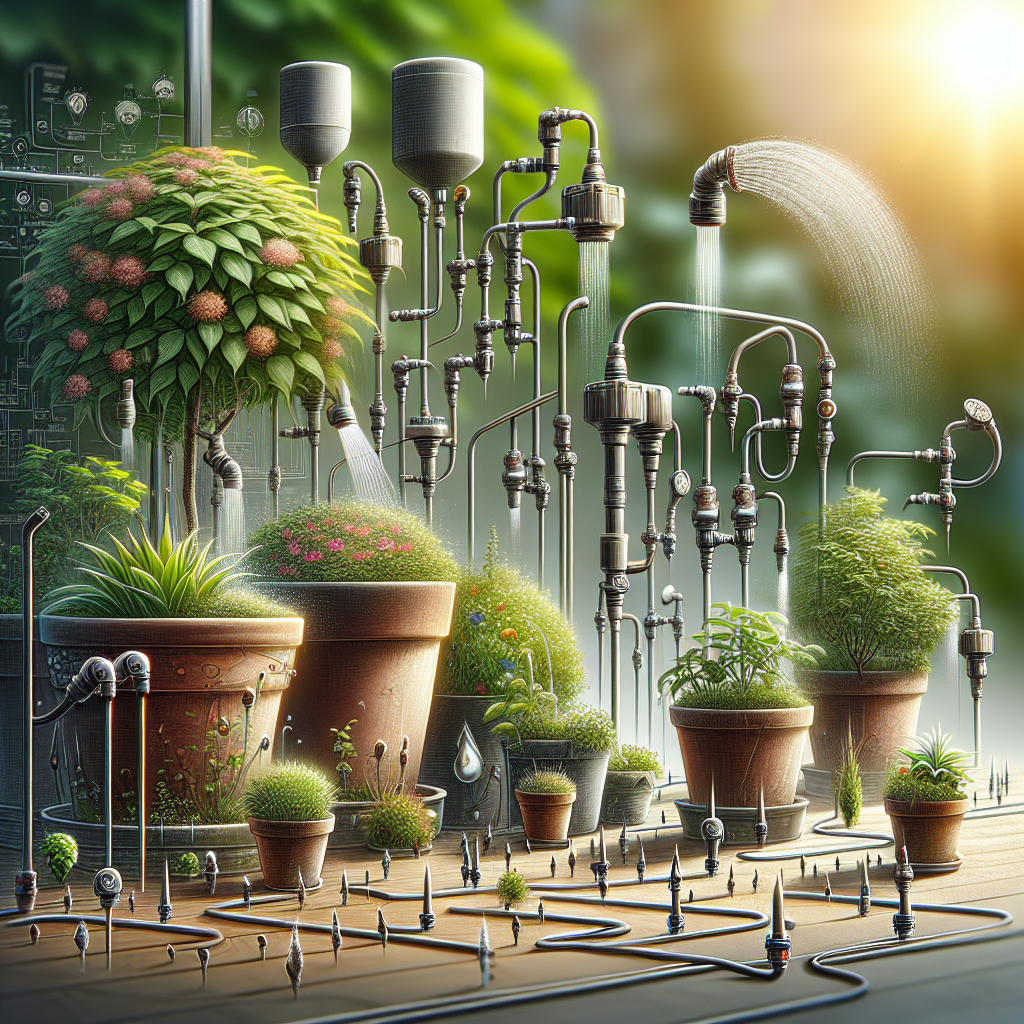Efficient Slow Drip Watering Systems for Pots
Watering plants can be a time-consuming task, especially when it comes to potted plants. The traditional method of watering pots involves manually watering each plant, which can be inefficient and time-consuming. However, with the advancement of technology, there are now efficient slow drip watering systems available that can make the task of watering pots much easier and more effective.
Slow drip watering systems work by delivering water directly to the plant’s roots, ensuring that the plant receives the right amount of water it needs without any wastage. These systems are particularly beneficial for potted plants as they help maintain consistent soil moisture levels, preventing overwatering or underwatering.
There are several different types of slow drip watering systems available for pots, each with its own unique features and benefits. Below are some of the most popular options:
1. Self-Watering Pots: Self-watering pots have a built-in reservoir at the bottom that holds excess water. The plant’s roots can draw water from this reservoir as needed, ensuring that they receive a steady supply of moisture. This system is ideal for busy gardeners who may forget to water their plants regularly.
2. Drip Irrigation Systems: Drip irrigation systems consist of small tubes or hoses that deliver water directly to the plant’s roots through tiny drippers or emitters. These systems can be customized to suit individual plant needs and can be set up on a timer for automated watering.
3. Watering Globes: Watering globes are glass bulbs filled with water that slowly release moisture into the soil as needed. These globes are placed into the soil near the plant’s roots and can help regulate soil moisture levels over an extended period.
4. Capillary Mats: Capillary mats are made from absorbent material and sit underneath potted plants to draw up water from a reservoir below. The mat wicks moisture up into the soil, ensuring that plants receive a consistent supply of water.
When choosing a slow drip watering system for your pots, consider factors such as the size and type of plants you have, as well as your individual watering needs and preferences. Additionally, consider factors such as how often you travel or how busy your schedule is when selecting a system that meets your needs.
Benefits of Efficient Slow Drip Watering Systems
There are several benefits to using efficient slow drip watering systems for pots:
1. Conserves Water: Slow drip watering systems deliver water directly to the root zone of the plant, reducing evaporation and runoff compared to traditional overhead sprinklers or hand-watering methods. This helps conserve water and reduces wastage.
2. Prevents Overwatering: Overwatering is a common issue with potted plants, leading to root rot and other problems. Slow drip watering systems allow for precise control over how much water is delivered to each plant, reducing the risk of overwatering.
3. Saves Time: Automated slow drip watering systems can save gardeners time by eliminating the need for manual watering. With these systems in place, gardeners can set up timers or sensors to ensure their plants receive consistent moisture levels without constant supervision.
4. Promotes Healthy Growth: By providing a steady supply of moisture directly to the roots, slow drip watering systems promote healthy growth in potted plants. Consistent soil moisture levels help prevent stress on plants and encourage strong root development.
In conclusion, efficient slow drip watering systems offer an easy and effective way to keep potted plants healthy and thriving with minimal effort from gardeners. By choosing a system that suits your individual needs and preferences, you can enjoy all the benefits these innovative systems have to offer while saving time and conserving water in your gardening routine.













